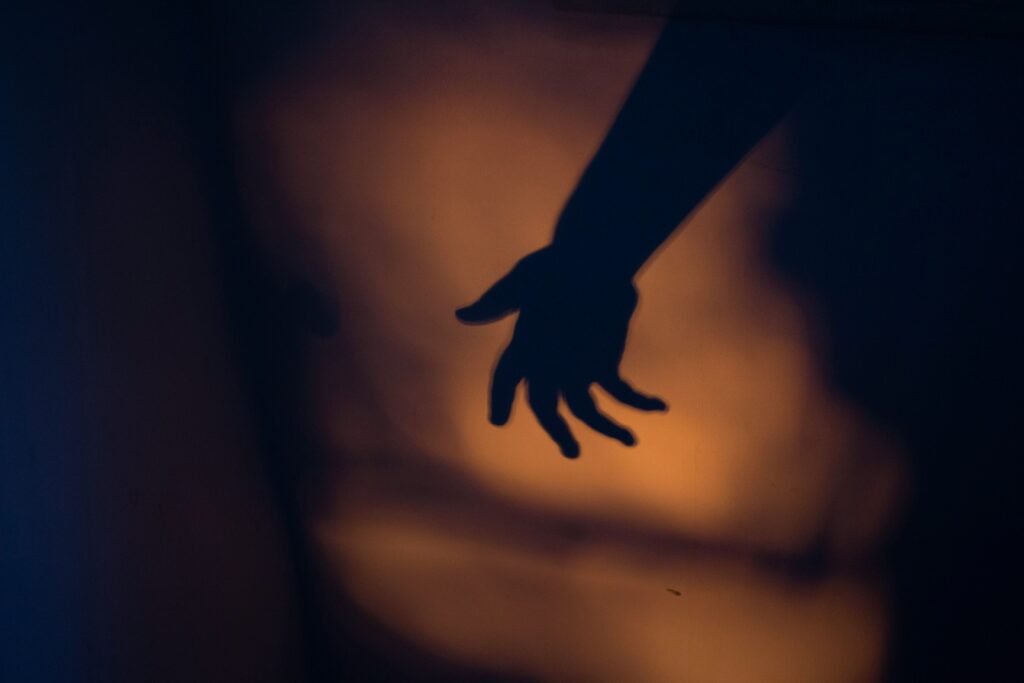The Extraordinary Phenomenon of Material Manifestations
When most people think of mediumship, they envision a psychic conveying messages from deceased loved ones—perhaps sharing details only the departed would know or delivering comforting words from beyond. This common form of spirit communication, while profound in its own right, represents only one aspect of the mediumistic tradition. Physical mediumship—a rarer and more controversial phenomenon—operates in a fundamentally different way, producing effects that extend beyond mental impressions into the physical world.
Physical mediumship involves the manifestation of seemingly impossible physical phenomena during séances or controlled sittings. These manifestations can include solid objects materializing out of thin air, disembodied voices speaking without any apparent source, musical instruments playing themselves, and in the most extraordinary cases, the partial or complete materialization of human forms claimed to be the physical embodiment of spirits. Unlike mental mediumship, which primarily involves subjective impressions in the psychic’s mind, physical mediumship produces objective effects that can potentially be witnessed and even documented by multiple observers simultaneously.
The history of physical mediumship reached its height during the Spiritualist movement of the late 19th and early 20th centuries, when mediums like Daniel Dunglas Home reportedly demonstrated levitation, handling fire without injury, and the materialization of phantom hands in well-lit rooms before credible witnesses. While this period was certainly marked by extensive fraud, careful historical research suggests that not all cases could be explained away as mere trickery. This complex history has made physical mediumship a subject of both fascination and skepticism within parapsychological research.
Mental vs. Physical Mediumship: Different Processes and Mechanisms
To understand physical mediumship, it’s helpful to contrast it with the more familiar mental mediumship. Mental mediums claim to receive information telepathically through the mind—impressions, thoughts, feelings, or images believed to originate from discarnate personalities. This process relies primarily on the psychic’s interpretive faculties and communication skills. The medium serves as a translator or interpreter, converting subtle impressions into coherent messages. This form of mediumship aligns with what we understand about extrasensory perception or telepathy, even if the source of information remains debated.
Physical mediumship operates through a fundamentally different mechanism. According to traditional spiritualist theory, the medium’s body serves not merely as a receiver of information but as a conduit and source of energy that spirits can utilize to produce tangible effects in the physical world. This process typically involves the production of “ectoplasm”—a mysterious substance supposedly emanating from the medium’s body that provides the material basis for physical manifestations.
The physical medium typically enters a deep trance state during which their autonomic functions may dramatically alter. Respiration, pulse, and even body temperature might fluctuate significantly. In this altered state, the medium’s consciousness supposedly steps aside, allowing their physical energy to be utilized directly by communicating entities. This profound dissociation distinguishes physical mediumship from mental mediumship, where the psychic typically remains conscious and actively engaged in the interpretive process.
What makes physical mediumship particularly intriguing from a scientific perspective is its potential to bridge the gap between subjective psychic claims and objective evidence. While mental mediumship primarily produces information that must be validated through verification of details, physical mediumship theoretically produces direct, observable phenomena that could be measured, photographed, or otherwise documented using conventional scientific instrumentation.
This possibility has made physical mediumship a subject of interest for serious paranormal researchers, even while many remain skeptical about its authenticity. The challenge lies in creating conditions that allow for sufficient control against fraud while still providing the specific environmental conditions that reportedly facilitate these rare phenomena.
The Scole Experiments: Modern Evidence for Physical Phenomena
While physical mediumship is often associated with the Victorian era, one of the most fascinating and well-documented modern cases occurred between 1993 and 1998 in the cellar of a farmhouse in Scole, Norfolk, in the United Kingdom. These sessions, now known as the Scole Experiments, involved a small group of mediums working with researchers under controlled conditions to produce a wide range of physical phenomena that defied conventional explanation.
The Scole Experimental Group consisted of mediums Robin and Sandra Foy along with Diana and Alan Bennett, who conducted regular séances in a completely darkened room (darkness being considered necessary for the manifestation of certain phenomena). What distinguished these sessions from many historical cases was the presence of experienced investigators, including members of the Society for Psychical Research—an organization founded in 1882 with a long history of careful paranormal investigation.
The phenomena reported during the Scole Experiments were remarkably diverse and complex. Participants witnessed dancing lights that moved in apparently intelligent patterns, direct voice phenomena where distinct voices spoke through the air rather than through the mediums, the materialization of small objects, unexplained images appearing on sealed photographic film, and even holographic-like projections of faces and figures visible to all present.
Particularly compelling was the group’s use of unopened rolls of film sealed in tamper-evident containers, which later showed distinct images when developed—including recognizable historical figures and written messages. These experiments with film were designed specifically to address skeptical concerns about potential fraud, as the sealed nature of the containers made it extremely difficult to explain through conventional means.
A detailed investigation by the Society for Psychical Research resulted in a 450-page report that, while not claiming definitive proof of survival after death, acknowledged that the phenomena observed could not be readily explained through known scientific principles or dismissed as simple fraud. The investigators noted the strict controls in place and the apparent impossibility of producing such diverse phenomena through trickery under the conditions provided.
The Scole Experiments represent an important case study in contemporary mediumship research because they combined elements of traditional physical mediumship with modern documentation methods and controls. While skeptics continue to question aspects of the proceedings, the case remains one of the most thoroughly documented modern instances of claimed physical mediumship phenomena.
Understanding Physical Mediumship in Context
The claims of physical mediumship challenge our conventional understanding of physical reality, raising profound questions about consciousness, the nature of matter, and the possibility of survival beyond bodily death. While maintaining appropriate skepticism about extraordinary claims, it’s worth considering how we might approach this phenomenon thoughtfully, avoiding both uncritical acceptance and dismissive rejection.
From a historical perspective, physical mediumship emerged within specific cultural and religious contexts, particularly the Spiritualist movement that gained prominence following the American Civil War and World War I—periods of mass grief when many sought comfort in the possibility of communication with lost loved ones. This cultural context partially explains both the appeal of physical mediumship and some of the skepticism it faces. The emotional significance of these claimed phenomena makes objective evaluation particularly challenging.
From a scientific standpoint, physical mediumship presents unique challenges. The phenomena reportedly require specific conditions (usually darkness) that complicate observation and documentation. The rarity of individuals who demonstrate these abilities consistently makes systematic study difficult. And the extraordinary nature of the claims requires correspondingly extraordinary evidence—a standard that historical anecdotes, however compelling, struggle to meet.
Nevertheless, organizations like the Windbridge Research Center continue to investigate mediumistic phenomena using contemporary scientific methods. These efforts focus on establishing controlled conditions that might allow for both the manifestation of genuine phenomena (if they exist) and sufficient documentation to satisfy scientific scrutiny.
For those interested in exploring physical mediumship, whether as potential practitioners or simply curious observers, I recommend several approaches:
- Study the historical context: Understanding the rich history of physical mediumship, including both compelling cases and exposed frauds, provides essential context for evaluating contemporary claims.
- Seek balanced perspectives: Familiarize yourself with both proponent and skeptical viewpoints, recognizing that truth in this domain may lie in nuanced territory that neither extreme position fully captures.
- Prioritize ethical engagement: If attending séances or similar demonstrations, look for practitioners who operate with transparency, avoid making grandiose claims, and show respect for both sitters and purported communicating entities.
- Develop discernment: Learn to distinguish between subjective experiences (which may be personally meaningful regardless of their origin) and claims about objective reality (which require more rigorous evidence).
- Consider alternative explanations: Phenomena attributed to spirits might potentially involve other processes like psychokinesis (mind influencing matter), group consciousness effects, or psychological factors—possibilities worth exploring alongside survival hypotheses.
Physical mediumship remains one of the most intriguing and controversial domains of psychical research. Whether these phenomena result from discarnate entities, unknown aspects of human consciousness, or some combination of conventional explanations and occasional fraud, they represent an area where careful investigation continues to yield fascinating questions about the nature of consciousness and its relationship to the physical world.♦
𝐓𝐨 𝐥𝐞𝐚𝐫𝐧 𝐦𝐨𝐫𝐞 𝐚𝐛𝐨𝐮𝐭 𝐉𝐚𝐜𝐤 𝐚𝐧𝐝 𝐡𝐢𝐬 𝐬𝐞𝐫𝐯𝐢𝐜𝐞𝐬 𝐯𝐢𝐬𝐢𝐭: 𝐰𝐰𝐰.𝐣𝐚𝐜𝐤𝐫𝐨𝐮𝐫𝐤𝐞.𝐧𝐞𝐭






